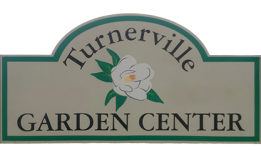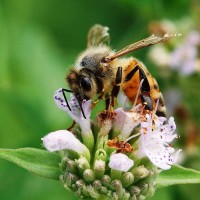The European Honey Bee and our 4,000 species of native bees in the U.S. have suffered dramatic losses to their populations due to a combination of many factors. Since bees pollinate a significant portion of our food crops, this is a problem that affects all of us. Without bee pollination services, many of our common fruits, nuts and vegetables would no longer be available.
Most of our suburban and urban landscapes offer little in the way of nectar and pollen sources which bees depend upon. To make things worse, our frequent use of pesticides, including seemingly benign lawn care products, is devastating to bees. Here are 7 tips on how you can help bees on your own property while maintaining a beautiful landscape.
1) Trees & Shrubs:
Include a significant number of trees and shrubs in your landscape – bees need them.
From spring through fall, “woody plants” aka trees and shrubs, provide valuable forage resources, nectar and pollen, to bees. Some of our earliest blooming trees, including maples, poplars, oaks, and willows, provide critical pollen and/or nectar to hungry bees, when they first emerge in the spring. In mid to later spring, trees such as redbuds, cherries and crabapples are highly valuable to bees. As summer arrives, basswoods, locust trees and even sumacs are major sources of nectar and pollen. Include a diversity of woody plants in your landscape to help bees.
2) Reduce Double-Flowered Plants:
Reduce the number of double-flowered plants which have little, or no, nectar and pollen.
Perennials and flowering woody plants are sometimes bred to have extra flower petals to make them showy and more appealing to humans. This typically results in those plants having little or no nectar and pollen, and accordingly renders them useless to bees and other wildlife. Although double flowered cherry trees may be beautiful in your landscape, they won’t feed hungry bees. Select single flowered plants, closest to their natural forms, to support bees and our native wildlife.
3) Diversify Species:
Use a diversity of plant species with a succession of bloom from early spring through fall.
Bees need forage sources throughout their active seasons. Since we have many species of bees, this means providing forage plants from March through October at a minimum. If the temperature reaches 55 degrees in February, you will see honey bees emerging from their hive, desperately seeking a food source. When they come across an early blooming witch-hazel or crocus in your yard, you have provided them with a much needed meal. Plant a wide variety of plants with blooms timed from spring through fall to support bees. This includes perennials as well as trees and shrubs.
4) Reconsider Lawn Size:
Reduce or eliminate your lawn in favor of flowering plants (perennials, trees and shrubs).
The typical, weed-free American lawn is an ecological wasteland to bees and native wildlife. It demands high levels of water, fertilizer and costly maintenance, and in return gives almost nothing back to the environment – no food, no shelter, and no cover to the living creatures in our ecosystem. If your lawn has been treated with traditional turf products, it will be full of pesticides which poison bees and other beneficial insects. You can make your lawn more bee-friendly by avoiding pesticides and allowing clover and dandelions to grow within the turf; both plants are significant sources of nectar and pollen for honey bees. Clover is often the major forage resource for urban and suburban honey bees and makes for particularly tasty honey.
5) Kill The Pesticides:
Eliminate synthetic pesticides, herbicides and fungicides (together known as “pesticides”).
Pesticides are often fatal to bees, so don’t spray before you know what the problem is and decide whether the problem is worth treating at all. If you feel an urge to spray pesticide on a rose bush which has been chewed by an insect, consider that the insect might be a Leaf Cutter Bee which uses that leaf material to create its nest. The bee will take just what it needs, rarely causing any significant damage to the plant. Tolerate some insect damage in your landscape – nature isn’t perfect and your landscape doesn’t have to be either. If you must use pesticides, use organic ones and use them sparingly and carefully only when bees are not flying. Organic does not mean benign and can be just as lethal to sensitive bees. A bee-friendly landscape is a pesticide-free landscape.
6) Go Native:
Support our 4000 species native bees by emphasizing regionally native plants.
Regionally native plants are those plants which have existed in a region before Colonists came to America and dramatically changed the natural landscape. Our native plants are important because they have co-evolved with all the living creatures in our ecosystems and directly support them. For example, our native Bumble Bees are the most efficient pollinators of blueberry plants, having evolved a special way of shaking pollen out of the flower using its unique method of “buzz pollination.” Some of our native bee species are “specialists” and depend upon just a few native plants for their forage; without those specific native food sources, those specialist bees become extinct. Even the valuable European Honey Bee can forage on many of our native plants. You can help these bee species, and the overall ecosystem, by emphasizing native plants in your landscape.
7) Have Tenants That “Buzz” With Excitement:
Provide nesting sites for native bees in your landscape.
Our native bees have very different nesting requirements from European Honey Bees, which maintain the large hives we are all know. Many people do not realize that native bees are solitary or nest in very small numbers. 70% of our native bee species nest in the ground and must have access to a sunny location with bare soil or very little vegetation. The other 30% of our native bees make their nests in old mouse tunnels, beetle tunnels, holes in trees, pithy plant stems or twigs, and in similar spots. To help native bees, leave an area of bare soil in a sunny location, keep perennials up over winter as bee nesting cavities, and leave some less tidy areas with old logs and dead trees, cut back to a safe height in highly trafficked areas.

